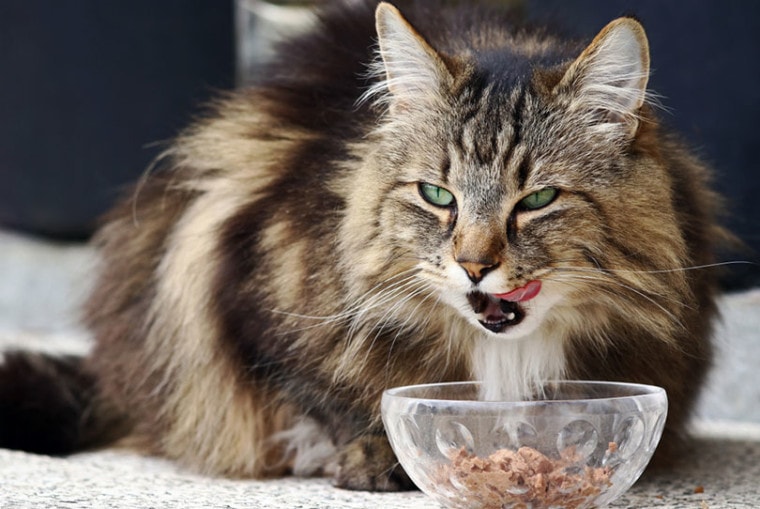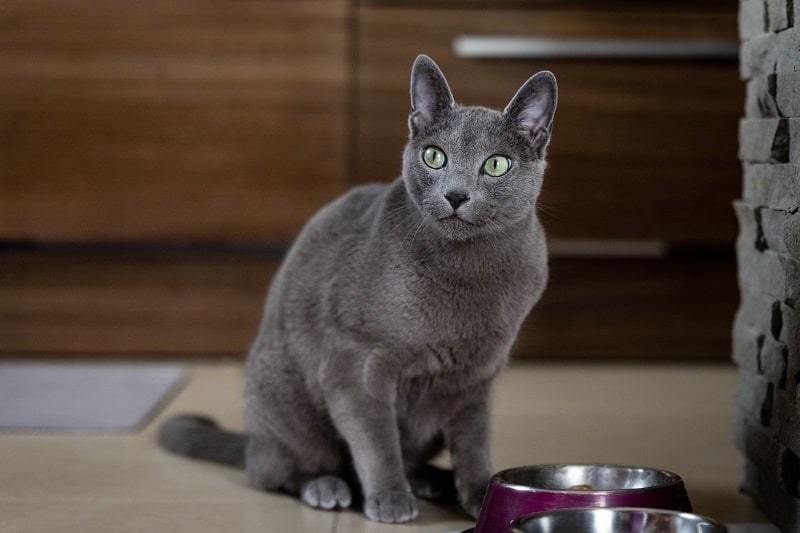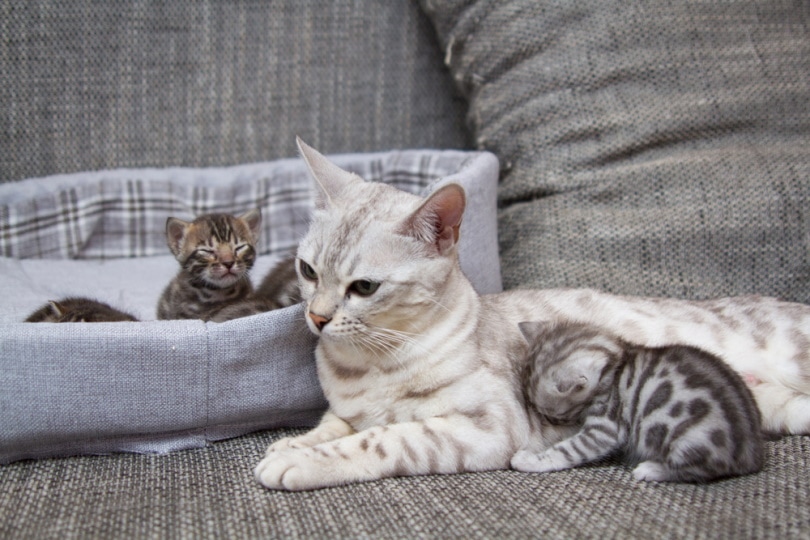
Vitamin D is needed for monitoring and controlling the amount of phosphorus and calcium in the body—including in the bones and bloodstream (the circulatory system). Because calcium and phosphorus are so essential for each individual cell to survive, their amounts are very closely monitored and regulated in animal bodies.
They are so essential that animals carry a ready supply of calcium and phosphorus to their bones. When one of these essential minerals runs low in the bloodstream, they can be released from the bones to be used elsewhere. Vitamin D (and other hormones) acts along the pathway that regulates the amount of calcium and phosphorus being absorbed or deposited into the bones.
Where Do Cats Get Vitamin D?
In a cat, vitamin D is absorbed into the body from food by the intestines. The requirement for vitamin D goes as far back in the evolutionary line as fish, but how each species absorbs and uses vitamin D varies. Some species use sunlight to increase vitamin D, while others get it from the food they eat.
Humans = sunlight. Cats = food.
Cats have a very efficient system of absorbing it (and calcium and phosphorus) through the intestines—from the food they eat. Cats do not produce the necessary chemicals in their skin to create and absorb vitamin D in their skin. Luckily, a meat diet is high in vitamin D because the vitamin is contained in blood, fat, and the liver.

The Effects of Not Enough Vitamin D
When there is not enough vitamin D in the diet, changes occur to the composition and integrity of the bones. The density of calcium and phosphorus changes because there is not enough vitamin D to regulate them. The bones can become weaker in spots, form abnormal growth patterns in other spots, and/or can even turn into fibrous tissue.
Metabolic Bone Disease
In humans, when a lack of vitamin D causes pathological boney changes, it is called rickets. However, most veterinarians use the term metabolic bone disease instead.
Metabolic bone disease is an umbrella term encompassing many complex and intricate ways bone densities can change because of a poor diet.
Many of the changes that happen overlap because, usually, if there is one dietary deficiency, there are also likely other deficiencies. For example, if there is not enough vitamin D, then there is also probably not enough calcium.
Furthermore, in animals, it can be difficult to precisely identify and categorize bone density changes because the In-depth diagnostics techniques that allow it in humans are not available in animals.

Pathologic Problems Encompassed by Metabolic Bone Disease
There are several pathologic problems connected to metabolic bone disease:
So, the term metabolic bone disease encompasses all these changes (pathologies) that occur because of poor diet and provides a plan for treatment without having to be too specific on the technical differences. The treatment is a better balanced diet.
Arthritis Is Not Metabolic Bone Disease
One important thing to remember about metabolic bone disease is that it affects many bones in the body, not just one or two. So, for example, arthritis causes bony changes in joints, but usually one or two at a time. Metabolic bone disease affects most or all the bones of the skeleton. However, some bones might be worse off than others. Arthritis is also not caused by a poor diet.
Signs of metabolic bone disease include the following:
Vitamin D in Adult Cats vs Kittens
Not enough vitamin D affects bones slightly differently in adult cats versus kittens.
Adult bones do not grow longer, but they absorb and release calcium and phosphorus. This process is called bone modeling. If an adult cat does not get enough vitamin D, over time, their bones cannot model correctly and become weak and painful. The result is metabolic bone disease that can often be reversed by correcting the diet if caught in time.
When there is not enough vitamin D in a kitten’s food, their growing bones are affected. They grow in abnormal patterns and can become painful. If not caught in time and treated with a well-balanced diet, bone deformities can be permanent. But most can go on to have a normal life, with normal healthy bones—as long as their diet is changed so they get enough vitamin D, calcium, and phosphorus.
However, it can easily be missed since affected kittens may appear normal. Their diets may have a vitamin deficiency, but they usually have enough proteins and fats to allow the kitten to grow normally in other places (i.e., the fur and muscles), but the hiding bones struggle to keep up.

The Importance of Vitamin D in Diet
When cats are not fed a balanced diet, they do not get the right amounts of vitamins and minerals (vitamin D and calcium, for example). This often happens when cats or kittens are fed only one type of meat, like only chicken liver or only beef hearts.
Homemade diets can easily have the right amount of calcium, phosphorus, or vitamin D since certain cuts of meat are so much more available in the average human’s kitchen. Too many chicken thighs for example.
In the wild cats, not being fed commercial diets often develop metabolic bone disease that can be devastating. A naturally foraged diet is often not a healthy enough diet, even if it does miraculously contain enough calories, especially for some of our more specialized and precious breeds. It is a myth that natural, foraged diets are better than our best commercial diets. In fact, before commercial diets became mainstream, many pet cats suffered and died from metabolic bone disease.
What About Too Much Vitamin D?
Cats can also be poisoned by too much vitamin D. Certain plants are poisonous for this reason.
And this is actually how some rodenticides kill rodents (and cats if they accidently ingest them). They overdose the animal on vitamin D, which causes a cascade effect along the calcium and phosphorus pathway. As a result, too much calcium is released from the bones and absorbed from the intestines into the bloodstream. The excess of calcium then interferes with normal cellular function. And often, the animal dies of kidney failure.
Summary
How we provide cats with the specialized diet they need has greatly improved with time. Without the excellent commercial diets available today, many of the specialty breeds we enjoy today would not be able to survive.
Cats have specific dietary requirements, and that includes getting vitamin D in their food. Without it, their skeletons would disintegrate.
Featured Image Credit: Astrid Gast, Shutterstock







